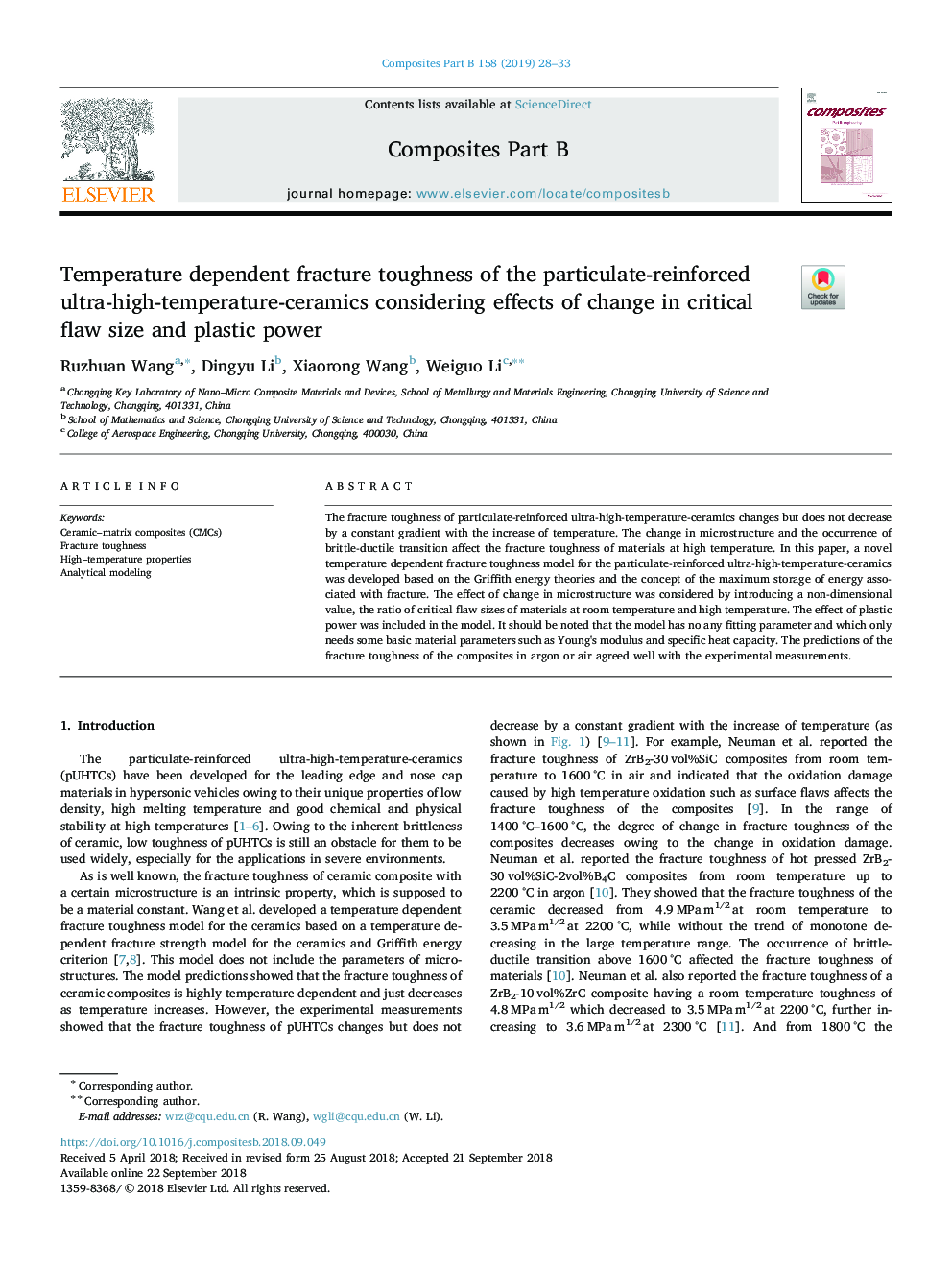| کد مقاله | کد نشریه | سال انتشار | مقاله انگلیسی | نسخه تمام متن |
|---|---|---|---|---|
| 11020678 | 1715619 | 2019 | 6 صفحه PDF | دانلود رایگان |
عنوان انگلیسی مقاله ISI
Temperature dependent fracture toughness of the particulate-reinforced ultra-high-temperature-ceramics considering effects of change in critical flaw size and plastic power
ترجمه فارسی عنوان
سختی شکست شکستگی درجه حرارت سرامیک فوق درجه حرارت تقویت شده ذرات با توجه به اثرات تغییر در اندازه نقص بحرانی و قدرت پلاستیکی
دانلود مقاله + سفارش ترجمه
دانلود مقاله ISI انگلیسی
رایگان برای ایرانیان
کلمات کلیدی
ترجمه چکیده
چقرمگی شکستگی سرامیک بسیار سرامیکی با ذرات تقویت شده تغییر می کند اما با افزایش درجه حرارت با یک گرادینت ثابت کاهش نمی یابد. تغییر در ریزساختار و وقوع انتقال شکنی مجذوف بر شدت شکست خوردگی مواد در دمای بالا تاثیر می گذارد. در این مقاله، بر اساس نظریه انرژی گریفیت و مفهوم ذخیره سازی حداکثر انرژی مرتبط با شکست، یک مدل چقرمگی شکستگی وابسته به درجه حرارت جدید برای سرامیک فوق درجه حرارت بالا با ذرات تقویت شده توسعه داده شد. اثر تغییر در ریزساختار با معرفی یک مقدار غیرمستقیم، نسبت اندازه ضایعات بحرانی مواد در دمای اتاق و دمای بالا در نظر گرفته شد. اثر قدرت پلاستیکی در مدل گنجانده شده است. لازم به ذکر است که مدل هیچ پارامتری مناسب ندارد و فقط نیاز به پارامترهای اساسی اولیه مانند مدول یانگ و ظرفیت حرارتی خاص دارد. پیش بینی های چقرمگی شکست کامپوزیت ها در آرگون یا هوا با اندازه گیری های آزمایشی همخوانی داشت.
موضوعات مرتبط
مهندسی و علوم پایه
سایر رشته های مهندسی
مهندسی (عمومی)
چکیده انگلیسی
The fracture toughness of particulate-reinforced ultra-high-temperature-ceramics changes but does not decrease by a constant gradient with the increase of temperature. The change in microstructure and the occurrence of brittle-ductile transition affect the fracture toughness of materials at high temperature. In this paper, a novel temperature dependent fracture toughness model for the particulate-reinforced ultra-high-temperature-ceramics was developed based on the Griffith energy theories and the concept of the maximum storage of energy associated with fracture. The effect of change in microstructure was considered by introducing a non-dimensional value, the ratio of critical flaw sizes of materials at room temperature and high temperature. The effect of plastic power was included in the model. It should be noted that the model has no any fitting parameter and which only needs some basic material parameters such as Young's modulus and specific heat capacity. The predictions of the fracture toughness of the composites in argon or air agreed well with the experimental measurements.
ناشر
Database: Elsevier - ScienceDirect (ساینس دایرکت)
Journal: Composites Part B: Engineering - Volume 158, 1 February 2019, Pages 28-33
Journal: Composites Part B: Engineering - Volume 158, 1 February 2019, Pages 28-33
نویسندگان
Ruzhuan Wang, Dingyu Li, Xiaorong Wang, Weiguo Li,
